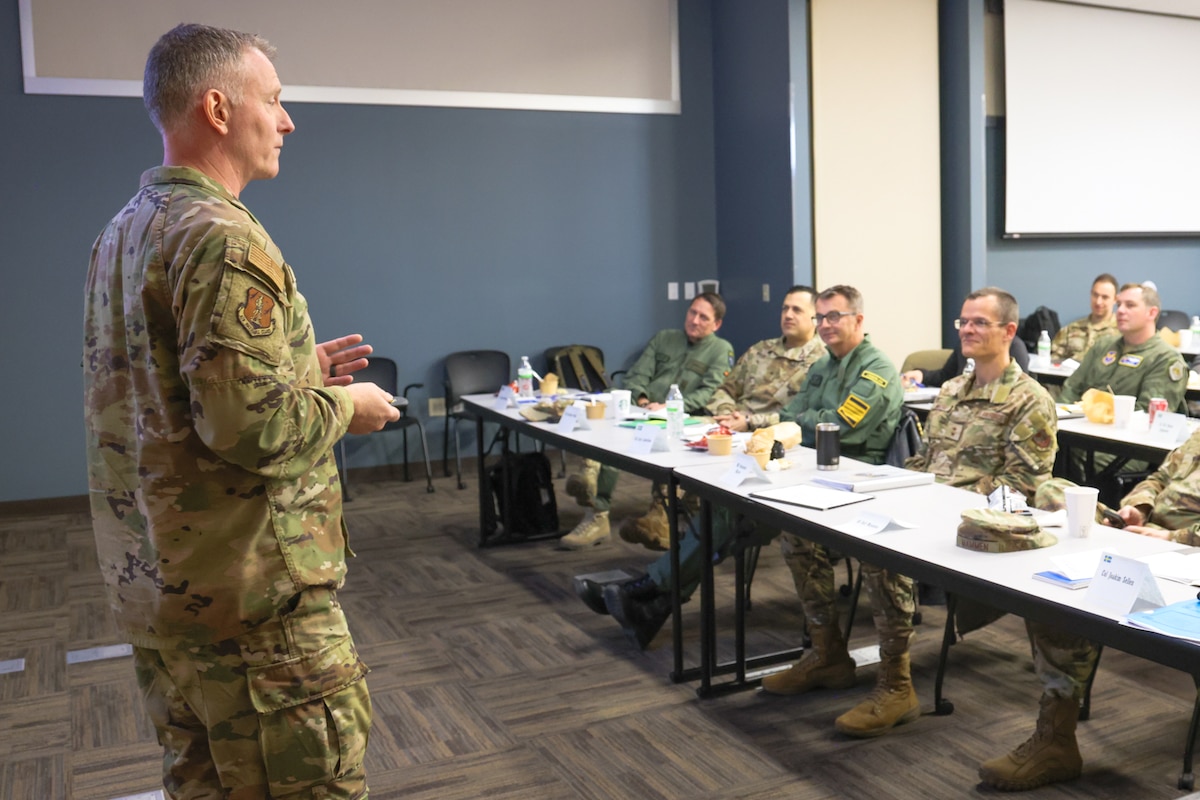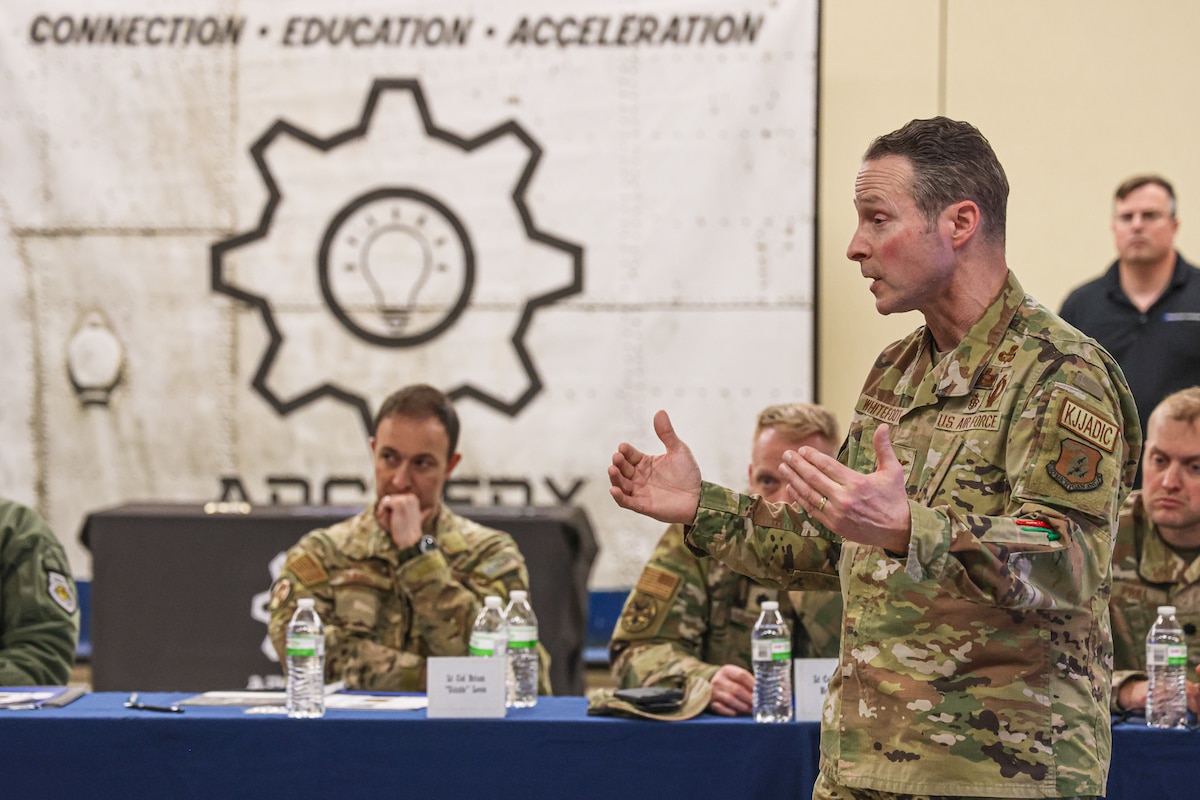The Michigan National Guard hosted members of Headquarters U.S. Air Force and the Swedish air force at the National All Domain Warfighting Center April 3-4, solidifying a significant step towards bolstering transatlantic military collaboration. This visit occurred just a month following Sweden's accession into the North Atlantic Treaty Organization March 7, marking a pivotal moment in the alliance's expansion.
During the visit to the Alpena Combat Readiness Training Center, one of the sites which encompass the NADWC, attendees received a comprehensive overview of the Michigan National Guard's Northern Strike exercise and NADWC's cutting-edge facilities. These exercises, conducted since 2011, provide a vital platform for international partners and allies to test personnel and equipment across a variety of geographies and in a multi-season environment.
The NADWC's terrain and climate is similar to that of Northern Europe and is capable of hosting opportunities for fifth-generation fighters to train with allies, other aircraft, and service members on the ground. Several of Sweden's neighboring countries fly the F-35 Lightning II, and training in the NADWC would offer annual opportunities for combined training in support of common defense security goals.
"The new relationship between Michigan and Sweden's air forces holds tremendous potential for enhancing our capabilities and readiness," said U.S. Army Maj. Gen. Paul Rogers, the adjutant general of the MING. "By leveraging Sweden's expertise and resources, we can significantly strengthen our collective defense posture."
Sweden's primary fighter platform, the SAAB JAS 39 Gripen aircraft, represents a cornerstone of its air force capabilities. While the Gripen serves as the backbone of Sweden's aerial defense, the country is actively pursuing the transition to a next-generation fighter, underscoring its commitment to modernization.
"The Swedish Air Force brings a wealth of experience and advanced capabilities to the table," said U.S. Air Force Col. Leah Voelker, 127th Air Refueling Group commander, Michigan Air National Guard. "Through this relationship, we have the opportunity to learn from their expertise and enhance our own training and operational effectiveness."
Sweden's emphasis on agile combat employment further enhances the partnership's significance. ACE, a strategic approach aimed at maintaining operational unpredictability and flexibility, aligns closely with Michigan's innovative ACE training approach, advances NATO's objectives, and underscores Sweden's commitment to enhancing its rapid response capabilities.
The MING's 127th Wing has been pushing the boundaries of training and operationalizing the concept of ACE over the last three years by landing A-10 Thunderbolt II aircraft on highways around the world during exercises and quickly launching them back into the air. The 127th Wing's KC-135 Stratotanker aircraft also validated ACE concepts while demonstrating specialized fuel operations, refueling, and defueling aircraft in tactical environments, known as "hot" refueling and "wet-wing" defueling.
"Sweden's expertise in ACE complements our own efforts to adapt and innovate in an evolving security landscape," Voelker said. "By incorporating their insights and best practices into our training regimen, we can better prepare for a wide range of contingencies and threats."
Sweden's proven track record in conducting highway landings and takeoffs, as well as its deployment of mobile infrastructure, demonstrates its ability to swiftly deploy and operate from dispersed locations. This mobility-centric approach aligns closely with MING's efforts to enhance its operational agility and responsiveness.
Along with ACE concepts, the participants shared discussions on innovation and the importance of modernizing how the military answers global challenges.
"We must extend innovation activities to allies and NATO partners such as this event with our Swedish guests," said U.S. Air Force Lt. Col. David Brewer, Kelly Johnson Joint All Domain Innovation Center representative and Air Force Futures innovation officer. "Intellectual sharing between the MING and our new NATO partner can help identify requirements and innovative approaches to technology adoption in defense activities."
The alliance between the MING and the Swedish Air Force represents a significant stride towards enhancing transatlantic military cooperation and readiness. By capitalizing on each other's strengths and capabilities, both organizations stand to benefit greatly, ensuring a more secure and resilient alliance in the face of evolving security challenges.
"The collaboration with Sweden opens up new avenues for training and operational synergies," Rogers said. "By leveraging their capabilities and expertise, we can enhance our readiness and ensure we are well-prepared to address the challenges of today and tomorrow."
MING is an experienced partner in exercising capabilities alongside NATO allies. Michigan has participated in the Defender Europe exercise series and been a cornerstone of the National Guard State Partnership Program, celebrating 31 years of partnership with Latvia in 2024.
"We are excited to welcome NATO's newest member, Sweden, to the National All-Domain Warfighting Center," Rogers concluded. "Strengthening our partnerships and the NATO alliance, as we have done with the State Partnership Program over the last 30 years, provides better collective defense and ensures the ideals of democracy and self-determination are perpetual."













